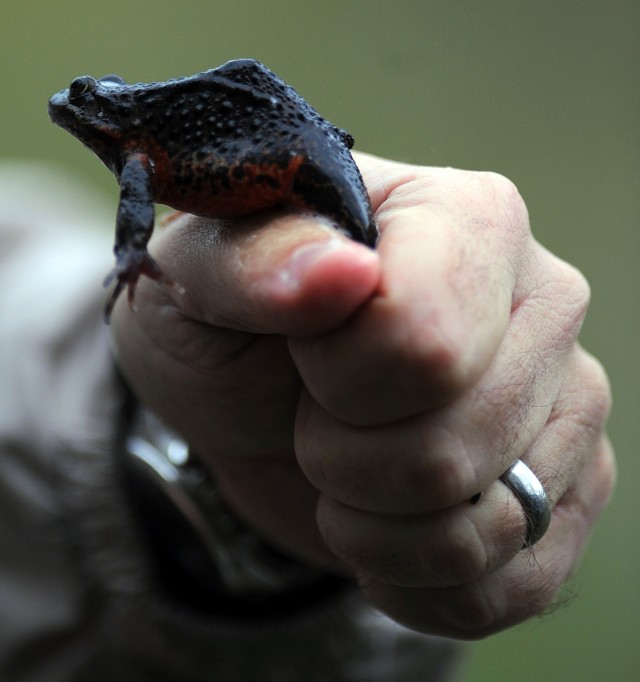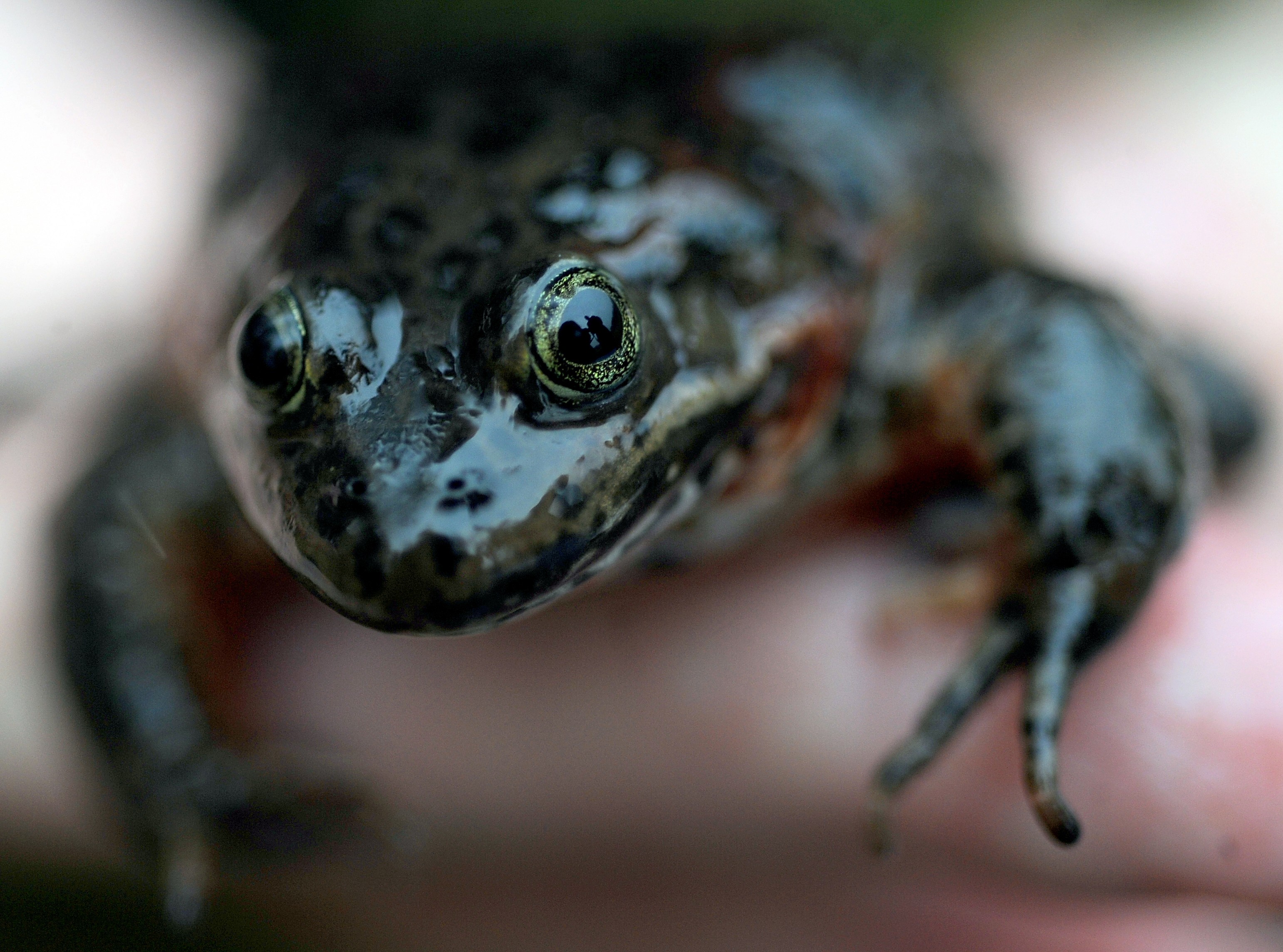FORT LEWIS, Wash. - Biologists at Washington Department of Fish and Wildlife, The Northwest Zoo Alliance, The Evergreen State College, Cedar Creek Correctional Center and Fort Lewis Fish and Wildlife are involved in a five-year-long Oregon spotted frog species reintroduction pilot project at the post's remote 40-acre Dailman Lake.
Last month members from the agencies gathered on the lakeshore to release nearly 80 of approximately 600 9-month-old frogs raised in captivity at their facilities.
The frog, native to the Puget Lowlands, has become a state endangered species due to loss of habitat, predation by non-native species, and disease.
"The species is extinct or thought to be extinct anywhere from 70 to 90 percent of its geographic range," said Marc Hayes, a WDFW biologist.
Since the project began in 2008, more than 1,000 juvenile frogs have been released at the site.
A couple thousand frogs might seem like a lot, yet scientists question if it is enough.
"When you look at the number of eggs laid by one female frog, 500 frogs a year does not add up to that many," said John Richardson, a biologist with Fort Lewis Fish and Wildlife.
Of the 500 eggs laid by a single female, only about 1 percent will reach their first birthday, he said.
"It's a very steep learning curve for baby frogs. They don't get to make mistakes," Richardson said.
Frogs can't reproduce until males are three years old and females are four.
"We hope to know in another year or two whether or not we have reproductive success (at the release site)," said Jim Lynch, a Fort Lewis Fish and Wildlife biologist.
"My goal at the end of this pilot study is that we will have learned how to recover this species, which may lead us to discover ways of recovering other endangered amphibians," he said.
Part of the project requires biologists to repeatedly return to the drawing board to consider the issues and the costs.
"We continue to develop techniques during this process that will benefit the frog's conservation and may be applied to other conservation projects," he said.
Together, Richardson and Lynch have been tracking the migration habits of several frogs using a radio collar system. Because Dailman Lake is directly connected to Muck Creek, the frogs have been found in several locations within that wetland system. So far, the biologists are pleased with the recovery efforts but admit they can't bring the species back on their own.
"In the broader scale, this is just a single attempt in a small area," Lynch said.
"If we're going to recover the species, we are going to have to attempt this in many locations throughout the state."
Ingrid Barrentine is a photojournalist with Fort Lewis' Northwest Guardian.








Social Sharing